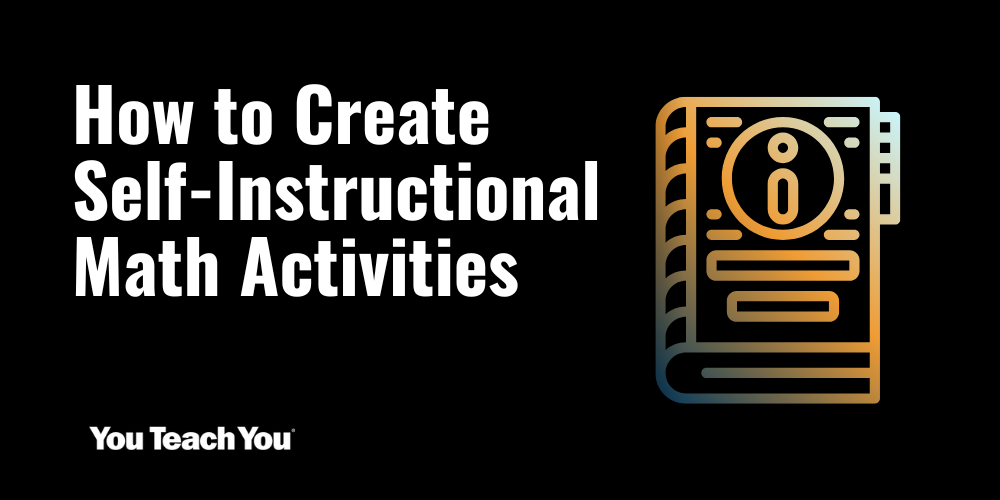I've received a lot of questions this past year about how to create self-instructional math activities based on pre-worked examples, generally from teachers who are thinking of creating such activities themselves. Allow me to illustrate with this activity from my book You Teach You, Book One: Basic Math Operations. My thoughts follow.

Worked-example activities should be self-explanatory. Otherwise teachers are forced to go from student to student, explaining everything on the fly. In the example shown, students see at once what the task is. There's no “What am I supposed to do?,” and thus nothing keeping them from getting right to work.
Worked-example activities - especially in math - should contain as little verbiage as possible. Math is its own language and can be used to communicate clearly and efficiently. Written directions and explanations, on the other hand, can be vague and confusing even despite our best intentions. Also, poor or developing reading skills should never prevent students from learning math.
Worked example activities should build on the skills that students are sure to have mastered and only those skills. The activity shown builds on a student’s ability to count and only their ability to count; it's reasonable to assume that beginning math students have mastered this skill.
Worked-example activities should make things explicit. Young children are often confused as to whether to count up starting at one or zero, for example. The activity shown clears up this issue right away, explicitly.
Worked-example activities should feature, not random, examples. The well-chosen examples and problems in the activity shown enable students to learn more than just the mechanics of addition; they enable them to discover that switching the order of the numbers in an addition problem doesn’t affect the result. (Later in the You Teach You series, this discovery will be used to more formally establish the commutative property of addition.) Clever selection of examples can increase student interest and gives you far more bang for your buck, instruction-wise.
Worked-example activities should facilitate learning. The things kids discover for themselves are more likely to stick, and worked-example activities such as the one shown are ideal for steering kids toward the precise discoveries we need them to make. Follow-up questions should also be included, as shown, to guarantee that the specific discoveries we need them to make actually get made.
Worked-example activities should reveal patterns. Pattern recognition lies at the heart of efficient and effective learning, and worked-example activities are uniquely capable of revealing the patterns we need students to see. The “switching numbers / same result” pattern that students discover in the activity shown, for instance, dramatically reduces the number of basic addition facts they’ll need to memorize later in their education (from 100 to 55), all in a single stroke.
Worked-example activities should always be accompanied by fully-worked-out keys. Instant feedback must be non-negotiable; learning is inhibited by slow or non-existent feedback loops. Correct answers alone won’t suffice, either; sources of errors must be tracked down with precision for genuine learning to take place.

In coming articles, I’ll reveal more pre-worked-example activities from the You Teach You series, along with the “tricks of the trade” behind them.
After all, you can never have too many examples.

